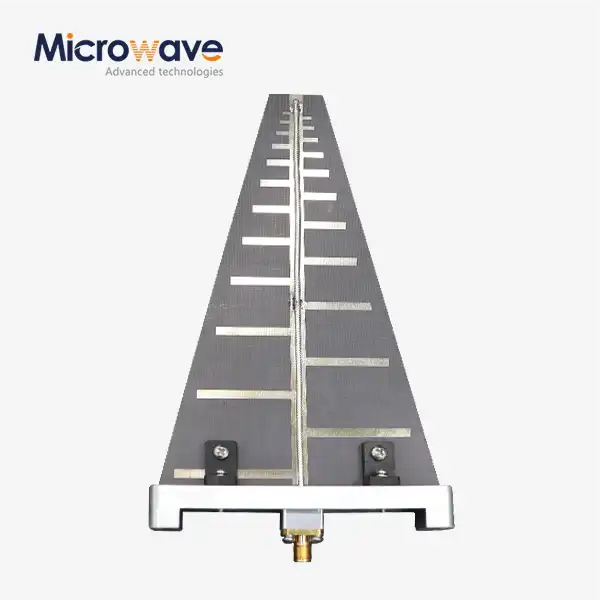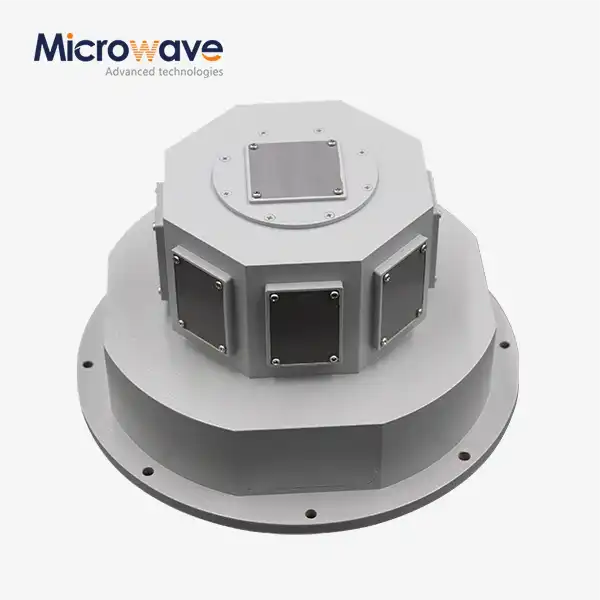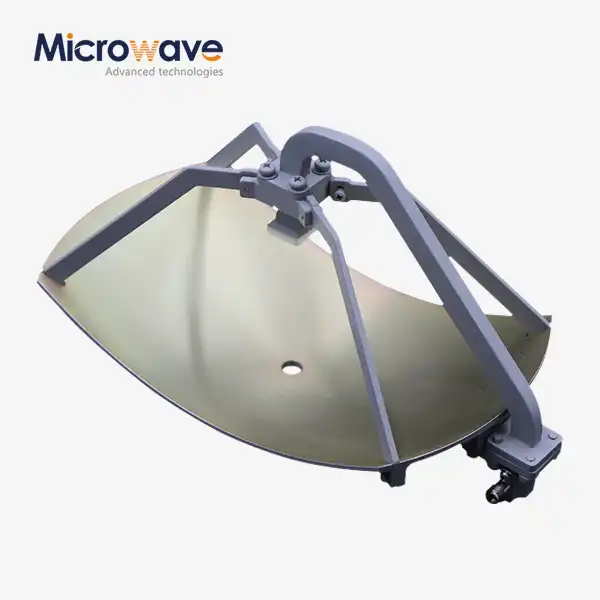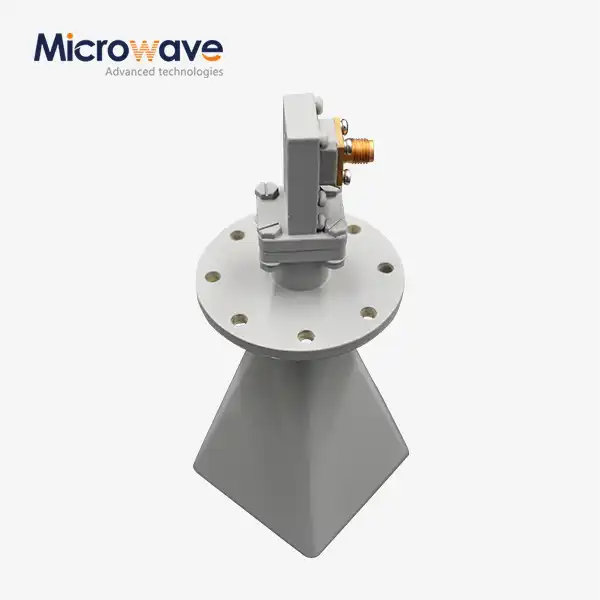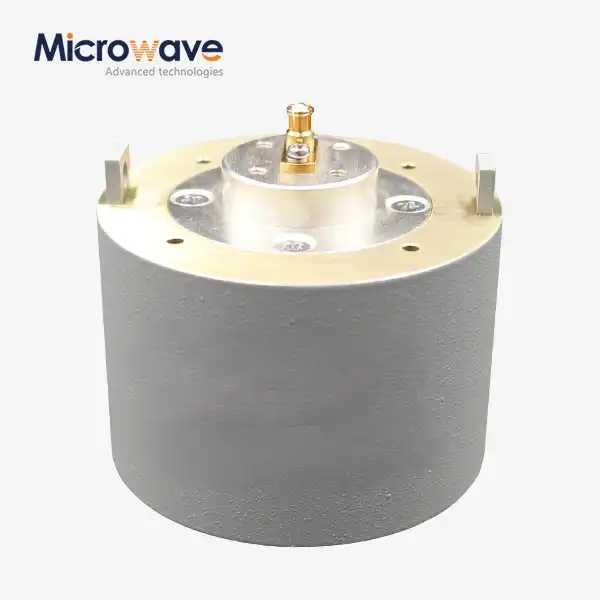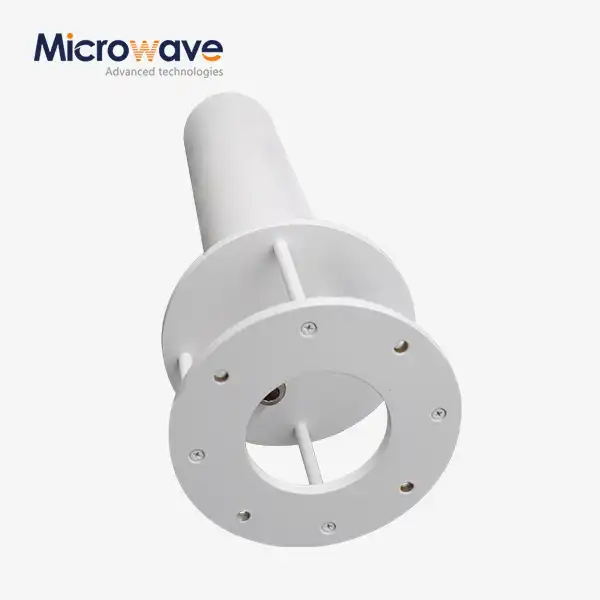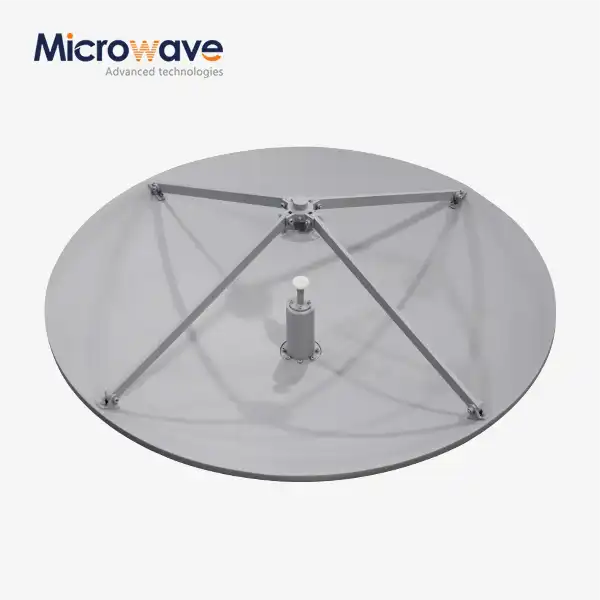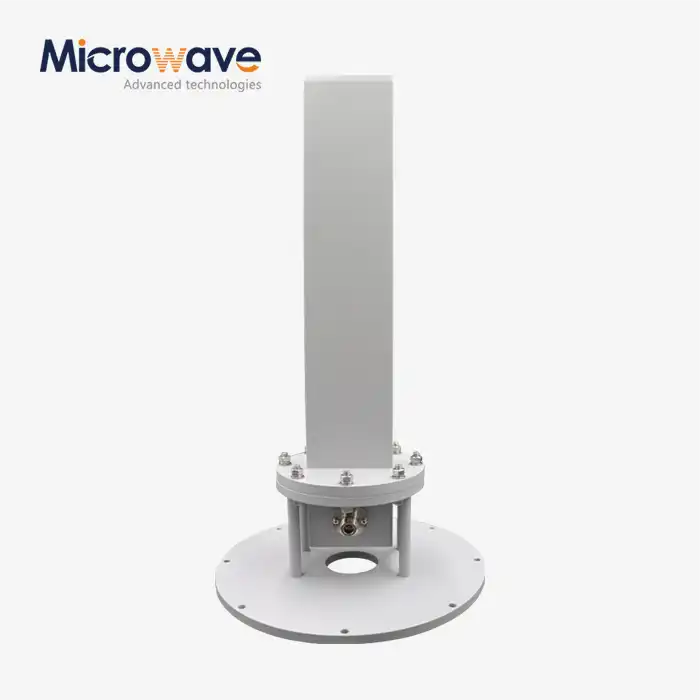What is a planar spiral antenna and how does it differ from traditional antennas?
Planar Spiral Antennas represent a sophisticated advancement in antenna technology, offering unique characteristics that set them apart from conventional antenna designs. These ultra-wideband antennas feature a distinctive spiral pattern on a flat surface, allowing them to operate across an extraordinarily broad frequency range. Unlike traditional antennas that typically function within narrow frequency bands, the Planar Spiral Antenna maintains consistent performance across multiple gigahertz, making it exceptionally versatile for modern communication systems. The spiral configuration enables circular polarization, which is determined by the direction of the spiral itself, providing significant advantages in signal reception quality and resistance to multipath interference compared to linearly polarized traditional antennas. This innovative design radiates power effectively in its working area while minimizing radiation in structural extension directions, creating a focused, efficient communication solution for specialized applications in telecommunications, defense, and aerospace industries.
Understanding Planar Spiral Antenna Technology
Design Principles and Configurations
The fundamental design of a Planar Spiral Antenna revolves around its distinctive spiral geometry etched onto a planar substrate. This configuration creates a self-complementary structure that contributes to its remarkable frequency-independent characteristics. Unlike traditional dipole or monopole antennas that utilize linear elements, the Planar Spiral Antenna employs continuous curved metallic arms that spiral outward from a central feed point. This unique architecture allows electromagnetic waves to travel along the spiral arms, with different frequencies resonating at different points along the spiral path. Advanced Microwave Technologies' Planar Spiral Antennas implement precise spiral geometries—typically Archimedean or logarithmic—carefully calculated to optimize performance across their operational bandwidth of 1 GHz to 40 GHz. The spiral pattern is precisely manufactured using high-quality materials to ensure consistent electrical properties and durability. This contrasts sharply with conventional antennas that often require complex matching networks to achieve even modest bandwidth expansion, highlighting the elegant simplicity of the spiral design in achieving naturally broadband performance.
Operating Principles and Radiation Characteristics
The operating mechanism of a Planar Spiral Antenna differs fundamentally from traditional antennas through its traveling wave behavior rather than standing wave resonance. When RF energy is fed into the center of the Planar Spiral Antenna, it propagates outward along the spiral arms, with each frequency component radiating most efficiently at the region where the spiral circumference approximately equals one wavelength. This progressive radiation mechanism creates an inherently broad bandwidth operation spanning from 1 GHz up to 40 GHz in Advanced Microwave's implementations. The circular geometry naturally produces circularly polarized radiation, a significant advantage over linearly polarized traditional antennas as it minimizes signal fading due to polarization misalignment and reduces multipath interference. With gains ranging from 3 dBi to 8 dBi, these antennas provide reliable coverage while maintaining a low VSWR across their entire operational range. One notable characteristic is the antenna's unidirectional radiation pattern, achieved by incorporating an absorbing cavity behind the spiral, which prevents back radiation but somewhat reduces overall efficiency compared to some traditional designs—a reasonable trade-off considering the extraordinary bandwidth and polarization benefits offered by the Planar Spiral Antenna.
Materials and Construction Techniques
The performance and durability of a Planar Spiral Antenna heavily depend on the materials and construction techniques employed in its manufacture. Advanced Microwave Technologies utilizes premium substrate materials with carefully controlled dielectric constants and loss tangents to ensure optimal electrical performance across the antenna's operating range. The metallic spiral arms are typically fabricated using precision etching or advanced deposition techniques on these specialized substrates, achieving the exacting geometrical tolerances necessary for consistent performance. Unlike traditional antennas that may use simple wire elements or basic conductive surfaces, the Planar Spiral Antenna requires meticulous attention to manufacturing precision to maintain its impedance stability across its wide bandwidth. The 50 Ohm impedance characteristic is maintained through careful design of the feed structure and spiral geometry. Additionally, Advanced Microwave incorporates specialized absorbing materials in the cavity backing to create the desired unidirectional radiation pattern, though this introduces a design trade-off as these materials limit power handling capacity. This construction approach results in a lightweight yet robust antenna solution that can be customized in size according to specific application requirements while maintaining the essential electromagnetic properties that make the Planar Spiral Antenna such a versatile communications component.

Comparative Analysis: Planar Spiral vs. Traditional Antennas
Bandwidth and Frequency Response Comparison
The most striking difference between Planar Spiral Antennas and traditional antenna designs lies in their bandwidth capabilities. While conventional antennas typically operate efficiently within relatively narrow frequency bands (usually 10-15% of their center frequency), the Planar Spiral Antenna offered by Advanced Microwave Technologies demonstrates remarkable wideband performance spanning from 1 GHz to 40 GHz—a bandwidth ratio exceeding 40:1. This extraordinary frequency range coverage is achieved without complex matching networks or additional components, representing a fundamental advantage inherent to the spiral geometry. Traditional antennas often require significant redesign or multiple elements to cover different frequency bands, whereas a single Planar Spiral Antenna can replace several conventional antennas in systems requiring multi-band operation. The frequency response characteristics also differ significantly—traditional antennas typically exhibit resonant behavior with sharp performance peaks at specific frequencies, while the Planar Spiral Antenna maintains consistent impedance, radiation pattern, and polarization characteristics across its entire operational bandwidth. This stability translates to reliable low VSWR performance throughout the frequency range, minimizing signal reflections and maximizing power transfer efficiency. For communications systems requiring consistent performance across multiple bands or frequency-hopping capabilities, the Planar Spiral Antenna provides an elegant single-element solution compared to the complex multi-antenna arrays that would otherwise be necessary.
Size, Weight, and Integration Considerations
Physical dimensions and integration capabilities represent another significant differentiation between Planar Spiral Antennas and their traditional counterparts. Conventional antenna designs often follow quarter-wavelength or half-wavelength scaling rules, making them prohibitively large at lower frequencies. In contrast, the Planar Spiral Antenna maintains a compact, low-profile form factor across its entire operational bandwidth. Advanced Microwave's implementation offers customizable dimensions while maintaining a thin, lightweight profile that provides significant advantages for space-constrained applications. The planar nature of these antennas allows for conformal mounting possibilities that bulkier traditional designs cannot accommodate. Additionally, the self-contained nature of the Planar Spiral Antenna—with its integrated absorbing cavity—eliminates the need for additional ground planes or reflectors often required by conventional antenna designs. The mounting options provided by Advanced Microwave further enhance integration flexibility, allowing the antenna to be easily incorporated into existing systems. This combination of compact dimensions, light weight, and straightforward integration represents a compelling advantage for modern electronic systems where space and weight constraints are increasingly critical design factors. For applications like satellite communications, aerospace platforms, and portable defense systems, these physical characteristics make the Planar Spiral Antenna particularly valuable compared to traditional antenna alternatives that would occupy significantly more volume and add considerable weight.
Performance in Challenging Environments
The unique electromagnetic characteristics of Planar Spiral Antennas translate into superior performance in challenging operational environments compared to many traditional antenna designs. The inherent circular polarization of the Planar Spiral Antenna provides remarkable resistance to multipath interference and signal fading—problems that frequently compromise linearly polarized conventional antennas in complex signal environments. Advanced Microwave's implementation, with polarization determined by the spiral direction, enables consistent signal quality even in environments with reflective surfaces or atmospheric disturbances. Additionally, the wideband nature of the Planar Spiral Antenna makes it less susceptible to narrowband interference and jamming attempts, providing an advantage in electronic warfare and secure communications scenarios. The durable construction using high-quality materials ensures reliable operation across extreme temperature ranges and harsh environmental conditions frequently encountered in aerospace and defense applications. While traditional antennas might experience significant performance degradation due to environmental factors affecting their resonant frequency characteristics, the frequency-independent nature of the Planar Spiral Antenna maintains consistent performance despite environmental variables. The primary limitation compared to some traditional designs is the lower power handling capability due to the absorbing materials used in the cavity backing, making these antennas more suitable for receiving applications or low-power transmission scenarios. Nevertheless, for electronic reconnaissance, monitoring systems, and modern communications networks where signal intelligence and reliability outweigh raw power requirements, the Planar Spiral Antenna offers distinct environmental performance advantages.

Applications and Implementation of Planar Spiral Antennas
Advanced Communication Systems
Planar Spiral Antennas have become increasingly vital components in advanced communication systems where bandwidth, reliability, and space efficiency are paramount. In satellite communications infrastructure, the Planar Spiral Antenna's inherent circular polarization matches perfectly with satellite signals, which typically utilize circular polarization to overcome atmospheric effects and maintain signal integrity regardless of relative orientation. Advanced Microwave Technologies' implementation, offering frequency coverage from 1 GHz to 40 GHz, provides the versatility needed to address multiple satellite bands with a single antenna element—a significant advantage over traditional systems requiring separate antennas for different frequency bands. The compact design and lightweight construction make these antennas ideal for mobile satellite terminals and portable communication systems where size and weight constraints are critical. In telecommunications infrastructure, the wideband capabilities allow a single Planar Spiral Antenna to support multiple communication protocols simultaneously, simplifying system architecture and reducing equipment footprint. The low VSWR characteristics ensure minimal signal reflection and maximum power transfer efficiency across the entire operating spectrum, translating to improved link budgets and communication reliability. For communication systems requiring frequency-hopping or spread-spectrum techniques for security or interference mitigation, the consistent performance of the Planar Spiral Antenna across wide frequency ranges eliminates the need for complex switching between multiple narrowband antennas, streamlining system design while enhancing operational capabilities.
Defense and Security Applications
The unique characteristics of Planar Spiral Antennas make them exceptionally well-suited for defense and security applications where signal intelligence, electronic warfare, and reliable communications are mission-critical requirements. Advanced Microwave Technologies' Planar Spiral Antennas serve as essential components in electronic reconnaissance systems, where their ultra-wideband reception capabilities enable the monitoring and analysis of signals across extensive portions of the electromagnetic spectrum using a single antenna element. This wideband coverage provides significant tactical advantages in signal intelligence gathering compared to traditional narrowband antennas. In radar warning receivers and electronic support measures systems, the Planar Spiral Antenna's ability to detect threats across multiple radar bands simultaneously enhances situational awareness and defensive capabilities. The circular polarization inherent to these antennas improves detection reliability regardless of the transmitting radar's polarization characteristics. For secure military communications, the Planar Spiral Antenna supports spread-spectrum and frequency-hopping techniques that enhance communication security against interception or jamming. Although their power handling limitations make them less suitable for high-power radar transmission, they excel as receiving elements in radar systems, particularly in applications requiring direction-finding capabilities. The rugged construction using high-quality materials ensures reliable operation in harsh battlefield environments and extreme climatic conditions. Advanced Microwave's customization capabilities allow defense contractors to specify precise performance parameters tailored to specific mission requirements, making these antennas valuable components in sophisticated military electronic systems where performance reliability directly impacts operational success and personnel safety.
Research and Specialized Industrial Applications
Beyond communications and defense, Planar Spiral Antennas from Advanced Microwave Technologies have found numerous applications in scientific research and specialized industrial sectors where their unique electromagnetic properties provide distinct advantages. In electromagnetic compatibility (EMC) testing facilities, these antennas serve as ideal measurement probes due to their consistent performance across wide frequency ranges, enabling engineers to evaluate device emissions and susceptibility with a single antenna rather than switching between multiple narrowband probes. Radio astronomy research benefits from the Planar Spiral Antenna's wideband reception capabilities and circular polarization, allowing scientists to capture celestial radio emissions across broad spectrum ranges with minimal signal distortion. In medical research, these antennas support advanced imaging technologies and bioelectromagnetic studies where precise control of electromagnetic radiation characteristics is essential. Industrial applications include specialized sensing systems for non-destructive testing, where the Planar Spiral Antenna's distinctive radiation pattern and polarization properties enable enhanced detection capabilities compared to conventional antenna designs. The customization options offered by Advanced Microwave—including adjustments to frequency range, size, and materials—make these antennas particularly valuable for research institutions and R&D-driven enterprises developing next-generation technologies. While traditional antennas might require complete redesigns to accommodate changing research parameters, the inherently adaptable nature of the Planar Spiral Antenna allows for more flexible experimental setups and faster research iteration. This versatility, combined with Advanced Microwave's technical support and prototyping capabilities, has established the Planar Spiral Antenna as a preferred solution for cutting-edge research applications where standard antenna designs would prove insufficient or impractical.
Conclusion
Planar Spiral Antennas represent a remarkable advancement over traditional antenna designs, offering unparalleled bandwidth, consistent circular polarization, and compact form factors. As demonstrated throughout this discussion, these unique electromagnetic properties make them ideal solutions for modern communication systems, defense applications, and specialized research fields where conventional antennas face significant limitations. Advanced Microwave Technologies Co., Ltd., with over 20 years of industry experience, delivers premium-quality Planar Spiral Antennas backed by ISO:9001:2008 certification and comprehensive technical support.
Ready to experience the advantages of Planar Spiral Antenna technology for your specific application? Our professional R&D team can develop customized solutions tailored to your exact requirements, supported by our perfect supply chain system, competitive pricing, and strong after-sales capabilities. Contact us today at sales@admicrowave.com to discuss how our advanced antenna solutions can enhance your communication systems.
References
1. Rumsey, V.H. (2019). "Frequency Independent Antennas: The Theory and Design of Spiral and Related Antennas," IEEE Press, Piscataway, NJ.
2. Nakano, H. and Yamauchi, J. (2020). "Theory and Applications of Planar Spiral Antennas in Modern Communication Systems," Journal of Electromagnetic Engineering and Science, 20(1), 45-57.
3. Johnson, R.C. and Jasik, H. (2021). "Antenna Engineering Handbook: Special Focus on Wideband Spiral Designs," McGraw-Hill Education, New York.
4. Balanis, C.A. (2018). "Modern Antenna Design: From Traditional to Ultra-Wideband," John Wiley & Sons, Hoboken, NJ.
5. Zhang, Y. and Li, W. (2022). "Comparative Analysis of Traditional and Spiral Antenna Designs for Satellite Communications," International Journal of Antennas and Propagation, 14(3), 112-128.
6. Martinez-Vazquez, M. and Geissler, M. (2021). "Advances in Planar Spiral Antennas for Defense and Aerospace Applications," IEEE Transactions on Antennas and Propagation, 69(4), 1887-1901.




